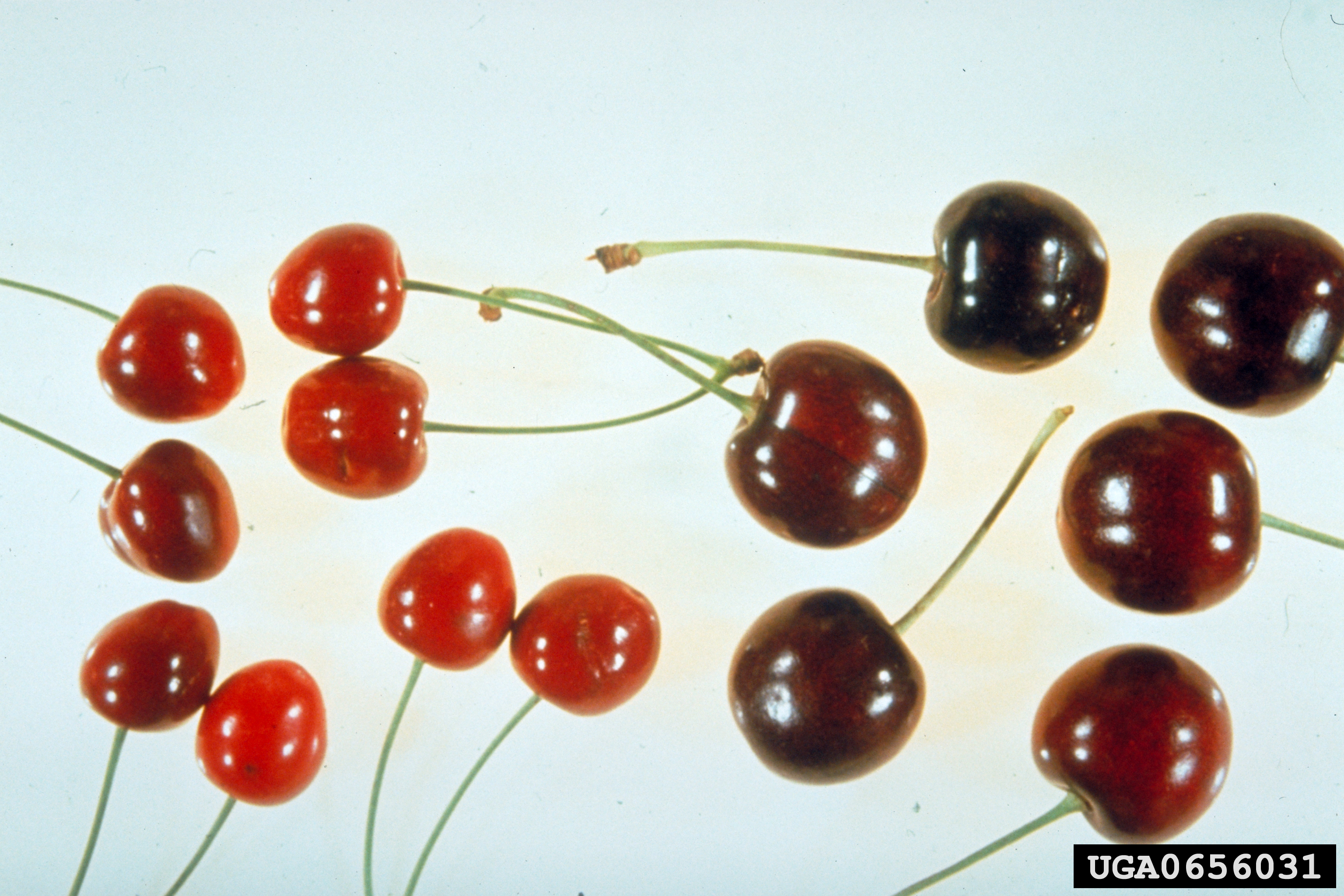
Little cherry disease is a declared pest in WA
Little cherry disease is not known to occur in WA, and must be reported to DPIRD if found or suspected to be present in WA.
Little cherry disease is known to occur in New South Wales, Queensland, Tasmania and Victoria.
About little cherry disease
Ampelovirus nanoavii is a viral plant pathogen, that is one cause of little cherry disease (LCD). It is a serious disease of cherries as it can reduce fruit marketability.
This virus is absent from WA.
Ampelovirus nanoavii affects sweet cherry and sour cherry. It can also infect cultivars of the oriental flowering cherry, but these infections are symptomless.
It is rarely found in other Prunus hosts, although it has been detected in plum in Japan and apple in Germany. More recently, LChV-1 has been detected in plum in Australia.
Symptoms are rarely seen in the orchard until 10 days prior to harvest. At this stage fruits often:
- appear smaller than healthy fruits
- look discoloured
- fail to fully ripen
- have reduced sweetness.
Leaf symptoms are not evident in all cultivars. The sweet cherry cultivar ‘Bing’ has visible leaf symptoms late in the season, interveinal areas of the upper leaf surface turn a red-violet or bronze colour while the midrib and main veins retain their green colour.
Little cherry disease primarily affects fruit size and quality and therefore impacts marketability. Fruits are smaller than normal and lack both flavour and colour.
Little cherry disease is readily transmissible by grafting from any part of an infected tree, because virus particles are evenly distributed through an infected tree. As such, long-distance spread of little cherry disease is possible through the movement of infected nursery stock, rootstocks, scions and budwood.
The virus is not transmitted by seed.
Apple mealybug (Phenacoccus aceris) and grape mealybug (Pseudococcus maritimus) have been reported to transmit little cherry disease between sweet cherry plants. These two mealybugs are not found in Australia, and they are declared prohibited pests to WA.
A report by Plant Health Australia suggests there is uncertainty as to whether Australian mealybug species might vector little cherry disease.
A study by Rott and Jelkmann (2001) suggest there may be other species of mealybugs, scale insects, or other insects that are yet to be determined as vectors of this virus.
Legal duty to report
Little cherry disease is not known to occur in WA.
Ampelovirus nanoavi is a declared pest under section 12 of the Biosecurity and Agriculture Management Act 2007.
This means that any person who finds or suspects the presence of little cherry disease must report it to DPIRD.
Report suspected little cherry disease
Early detection and eradication will help protect Western Australian cherry growers. If you find or suspect the presence of little cherry disease, report it in one of the following ways.
WA's freedom from little cherry disease is supported by general and specific surveillance and specific import requirements to prevent its entry.
